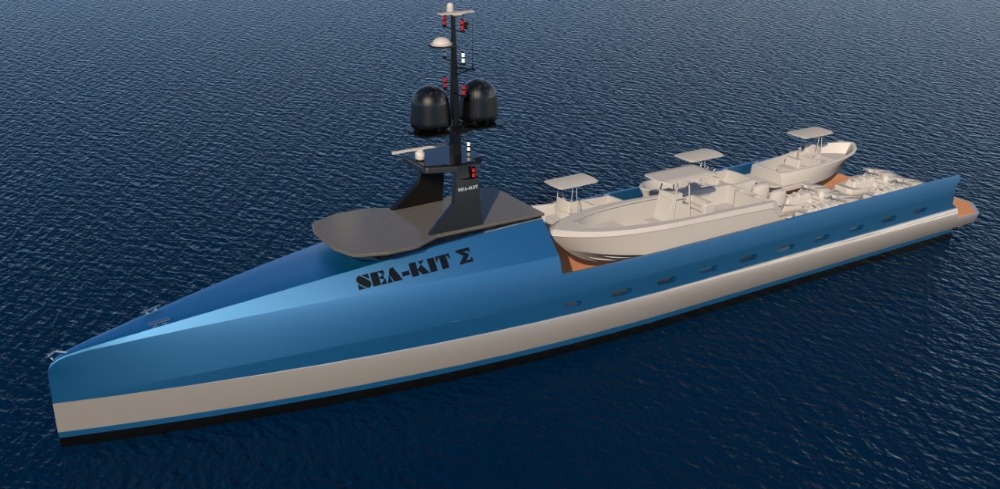SEA-KIT unveils ‘uncrewed’ superyacht support vessel concept
The first uncrewed vessel specifically designed for the industry…
SEA-KIT International, a British SME providing hi-tech, USV (uncrewed surface vessel) solutions to the maritime and research industries, has just revealed its concept for a remotely operated superyacht support vessel which aims to significantly change superyacht operations, embracing emerging technologies to provide an enhanced leisure experience for yacht owners, guests and crews.
“The idea came from the potential advantages that the use of uncrewed vessels can deliver to the superyacht industry now that the technology is proven in other marine sectors. The potential saving of the environment is significant - the size of yachts and their support vessel can be significantly reduced, saving fuel and even reducing the amount of rubbish created by the crew,” began Nick Swift, Business Development and Sales Consultant at SEA-KIT International.
“The superyacht industry seems to embrace new ideas in design and technology and is starting to consider their impact on society and the planet, and the use of unmanned vessels will support environmental and cost savings,” he continued.
"The low capital and operating cost can open up the support vessel market to many other owners and yacht charter companies, and has the potential to change the business model for the supply of toys and tenders. Even ports and marinas can use the uncrewed vessels to provide services to superyachts..." - Nick Swift, Business Development and Sales Consultant at SEA-KIT International
Technology has reached a point of maturity to an extent that uncrewed superyacht support vessels could become commonplace. “The low capital and operating cost can open up the support vessel market to many other owners and yacht charter companies, and has the potential to change the business model for the supply of toys and tenders. Even ports and marinas can use the uncrewed vessels to provide services to superyachts,” he added.
The 36m SEA-KIT Sigma design is based on the company’s commercially-proven ‘Uncrewed Surface Vessel’ (USV) technology, which played a key role in the winning GEBCO-NF entry to the 2019 Shell Ocean Discovery XPrize, and also completed the first uncrewed crossing of the North Sea last year.
SEA-KIT’s design concept features a hybrid power system that further reduces energy consumption and costs. A smaller vessel also requires less berthing space in ports and marinas, reducing infrastructure requirements and their associated environmental impact. “The vessel will be driven by electric thrusters which can be power by batteries or direct from a generator, much like a hybrid car. The advantages are that the energy usage from the diesel power generators is fully utilised, and the batteries can be recharged by the generator or shore power when alongside thus reducing fuel consumption,” he explained.
When running on batteries alone, the vessel will also be very quiet, meaning that when in the vicinity of the superyacht and marine mammals, the batteries can be used, and the vessels will be almost silent - not disturbing anyone or anything.
Superyacht tenders and toys could be transported and operated from SEA-KIT's USV, freeing up space on the yacht so that its design can be optimised for the comfort of guests, and its aesthetic form is not compromised by storing bulky tenders and toys. Accommodation can be provided for up to four superyacht support staff, though no ship’s crew are required.
As flexibility is key with a support vessel, Swift confirms that this is one of the key benefits of his concept. The USV can be modified to meet customer requirements and its flexible, modular design enables it to be rapidly reconfigured for the changing requirements of superyacht users.
SEA-KIT’s new uncrewed vessel concept will deliver a transformational change in the provision of support for superyachts, providing an environmentally friendly and economic solution that can be reconfigured to accommodate the latest recreational vessels, vehicles and equipment and that reduces dependence on ships crews.
“The unmanned vessel can be sent ahead, or 'run errands' for the superyacht - i.e. go into a port to pick up new toys, tenders and supplies ahead of the superyacht. This also means that a superyacht can operate without direct human contact with local personnel, which may be of benefit in the current climate! We have already crossed the North Sea from the UK to Belgium uncrewed, and are doing the equivalent of The North Atlantic ocean crossing, including leaving Plymouth harbour (UK) uncrewed,” he commented.
The vessel and its operations will be controlled remotely using SEA-KIT’s proven G-SAVI system, while the control room can be shore-based or located onboard the superyacht, and operations can be passed between control rooms. Dynamic positioning can hold the vessel on-station, close to the superyacht without the need for anchoring.
This could be a service offered by charter companies, or marinas/ports/destinations in a cost-effective way, enabling toys and tenders as a service, and thus changing the business model from 'ownership' to 'usership' of toys and tenders...
Alongside the environmental benefits and flexibility of the vessel’s format, another important part to note is the strong potential for charter companies to use this concept. “Imagine a charter company has these vessels operating from ports in key locations around the world… Their chartered yachts could 'order' the toys, tenders and any special stores as it's heading to a nearby location, and the uncrewed support vessel could be loaded, dispatched and be waiting for the yacht in a secluded bay of the owner’s/charter’s choice when the yacht arrives. If different toys, tenders and stores are required for the following day, the support vessel can return to the port to be reloaded and dispatched to arrive at the yacht the next morning,” added Swift, emphasising that this could be a service offered by charter companies, or marinas/ports/destinations in a cost-effective way, enabling toys and tenders as a service, and thus changing the business model from 'ownership' to 'usership' of toys and tenders.
The vessel would also be far safer, as reduced manning naturally reduces the chances of accidents, and in addition to this, the vessel could be used to go ahead of a superyacht in poorly charted/uncharted regions to ensure there is enough water depth for the yacht.
“We are currently building the second 12m vessel, though not a superyacht support vessel. The larger vessel is on order and will be launched next year - again not for the superyacht market (for ocean science), but the hull, propulsion and control system will be the same,” concluded Swift.
As the first unmanned support vessel specifically designed for the superyacht industry, it is safe to say that there is great potential here to review what we deem to be a 'traditional' support vessel, and which aspects we could significantly change for the better.
Profile links
NEW: Sign up for SuperyachtNewsweek!
Get the latest weekly news, in-depth reports, intelligence, and strategic insights, delivered directly from The Superyacht Group's editors and market analysts.
Stay at the forefront of the superyacht industry with SuperyachtNewsweek
Click here to become part of The Superyacht Group community, and join us in our mission to make this industry accessible to all, and prosperous for the long-term. We are offering access to the superyacht industry’s most comprehensive and longstanding archive of business-critical information, as well as a comprehensive, real-time superyacht fleet database, for just £10 per month, because we are One Industry with One Mission. Sign up here.
Related news
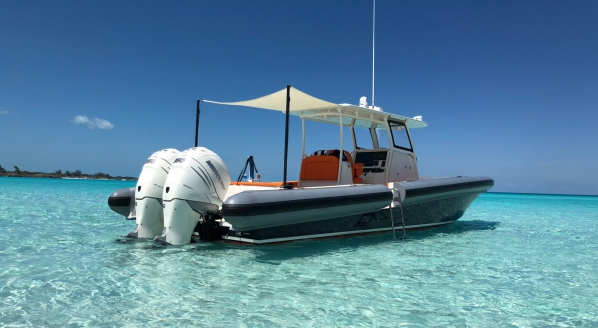
Stability, comfort and performance
With over 30 years of sailing and yachting experience, Dean Maggio offers an insight into Ocean 1’s latest projects
Design
.jpg)
ROM 28: one of a kind
ROM Boats reveals details of its first limited-edition superyacht tender
Design

Naumatec to develop range of sub-3.80 metre tender models
Naumatec hopes to acquire a new portion of the market with new possibilities
Design
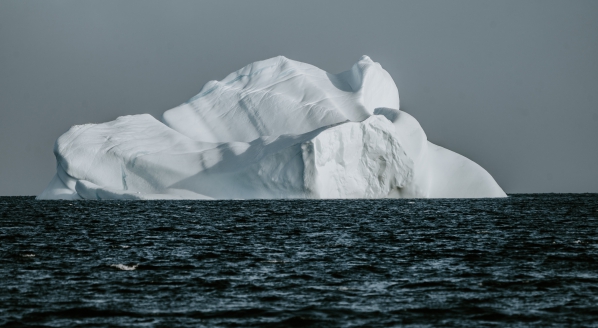
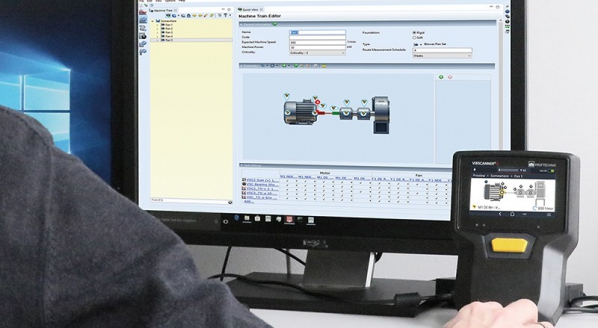
Increasing demand for condition monitoring systems during COVID-19
How the industry is mitigating the health risks of in-person vessel examinations
Technology
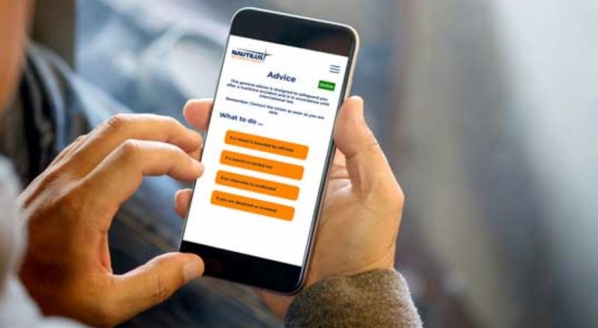
Nautilus launches app to support fair treatment of seafarers
The maritime union aims to provide members with instant access to advice and support following an incident
Crew
Related news
Stability, comfort and performance
5 years ago
ROM 28: one of a kind
5 years ago
Mental health on board superyachts
5 years ago
Interaction and control
5 years ago
NEW: Sign up for
SuperyachtNewsweek!
Get the latest weekly news, in-depth reports, intelligence, and strategic insights, delivered directly from The Superyacht Group's editors and market analysts.
Stay at the forefront of the superyacht industry with SuperyachtNewsweek


